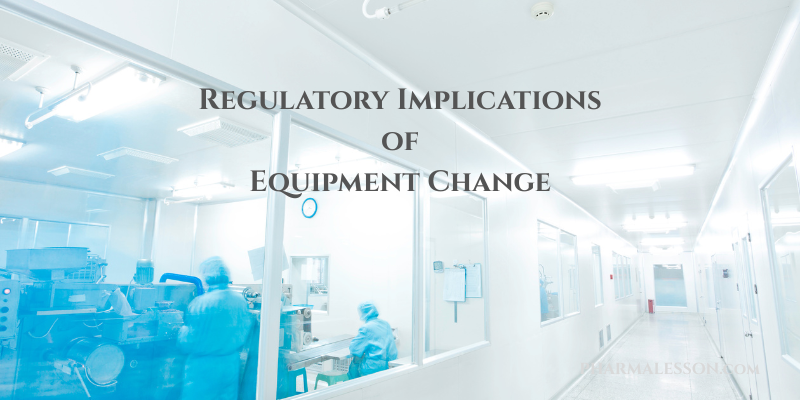Regulatory Implications of Equipment Change in Pharmaceutical Manufacturing
Changes in equipment used for manufacturing a product can have different implications depending on the market. Regulatory authorities assess these changes based on their potential impact on product quality, safety, and efficacy. Below is a comparative view of how major markets handle equipment changes:
USFDA
- Governed by 21 CFR Part 314 (ANDA) and 21 CFR Part 211 (cGMPs).
- Equipment changes are categorized under SUPAC guidance.
Risk-Based Approach:
Major Change (Prior Approval Supplement – PAS): If the new equipment alters product quality, critical process parameters (CPPs), or critical quality attributes (CQAs), prior approval from USFDA is required.
Moderate Change (Changes Being Effected – CBE/CBE-30): If the change has moderate risk (e.g., different type of mixer but same principle), FDA needs to be informed within 30 days.
Minor Change: If the equipment change has no impact, it can be reported in the annual filing.
EMA
Governed by EMA Variations Regulation (EC No. 1234/2008).
Changes are categorized into Type IA, IB, or II Variations:
- Type IA (Do-and-Tell Change): Minor change, notified within 12 months.
- Type IB (Tell-and-Wait Change): Moderate risk, approval required before implementation.
- Type II (Prior Approval Required): Significant impact on product quality; requires full evaluation before implementation.
MHRA
- Follows EMA variation categories but has a separate national approval system post-Brexit.
- Requires clear justification of impact through comparability studies and GMP compliance assessments.
TGA
Governed by the Therapeutic Goods Act 1989.
Changes classified into:
- Category 3 Variation (Minimal impact, no prior approval).
- Category 2 Variation (Moderate impact, requires TGA review).
- Category 1 Variation (High impact, requires extensive review).
Health Canada
Uses Post-Notice of Compliance (NOC) Changes Guidance.
Categorized into:
- Level I Change (Major, Prior Approval Required).
- Level II Change (Moderate, Notify and Wait for Acceptance).
- Level III Change (Minor, Annual Notification).
WHO Prequalification
Follows WHO Guidelines on Variations.
Equipment changes need a Comparability Protocol with:
- Justification for change.
- Risk assessment and impact evaluation.
- Stability and bioequivalence (if applicable).
CDSCO
Governed by Schedule M & New Drugs and Clinical Trials Rules 2019.
Equipment change must be reported in:
- Post-approval changes notification (low risk).
- Prior approval changes submission (high risk).
Key Takeaways for Equipment Change Approval
- Risk Assessment is crucial across all markets.
- Comparability Studies must demonstrate no impact on CQAs.
Regulatory Category Matters: Understanding whether it falls under major, moderate, or minor change is essential for submission strategy.
GMP Compliance: New equipment must meet GMP requirements and be validated.
Read also:
- Key Considerations for API Source Change in Formulation
- Key Considerations for Changing the Manufacturing Site of a Formulation
- Regulatory Strategies for Excipient Grade Changes Across Global Markets
Resource Person: Moinuddin syed. Ph.D, PMP®







